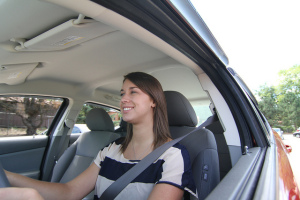In 2017, 12 residents at a nursing home in Broward County died in the aftermath of Hurricane Irma.
In March 2018, then-Gov. Rick Scott signed a bill requiring all nursing homes and assisted living facilities to have alternative sources of power in the event of a natural disaster. The original deadline for compliance was Jan. 1, but some facilities are still requesting extra time. June 1 was the official start of hurricane season and the new deadline for facilities to implement their plans.
Most counties in north central Florida are compliant, including Levy, Gilchrist, Columbia, Union, Bradford and Putnam.
According to the state Agency for Health Care Administration (ACHA), Alachua and Marion counties are both in 100 percent compliance.
According to the ACHA, a facility is compliant if its plan is fully implemented, or it has requested or been granted a deadline extension based on valid delays. All such requests are considered on a case-by-case basis.
Availability of proper equipment, installation scheduling and mechanical engineering plans reviews and approvals are some key reasons why facilities may require an extension.
According to ACHA’s website, nursing homes and assisted living facilities may qualify for supply costs reimbursement and funding assistance through Medicare and the U.S. Department of Housing and Urban Development (HUD).
The new environmental control rule mandates that the plan a facility sends to a local emergency management department should include a timeline by which it would be fully implemented.
The new state law sets no limits regarding extension requests or their duration.
While Alachua and Marion counties are all in compliance. Other counties, however, have more work to do in order to become compliant.
Clay County is at 96 percent, but there is no timeline for reaching 100 percent. On April 10, according to state records, Governors Creek Health and Rehabilitation in Clay County filed a petition requesting more time beyond June 1. Heartland Healthcare Center – Orange Park is also seeking the same extension.
Duval County is also at 96 percent. Seven centers had petitioned for more time, including Heartland Health Care Center of South Jacksonville, San Jose Health and Rehabilitation Center, First Coast Health and Rehabilitation Center, ISLF Deerwood Place, Fouraker Hills Rehabilitation & Nursing Center, Terrace of Jacksonville and Riverwood Center.
Facilities granted extensions must send monthly and quarterly progress reports to ACHA.
The facilities with approved extensions are still required to have an adequate plan to protect patients during a power outage. This includes a temporary generator on-site, a plan to obtain a generator within 24 hours of a power outage or a full evacuation plan.
In Levy County, some facilities have taken a different approach. Instead of purchasing generators, they borrow them.
The Electrical Generating Systems Association and Disaster Contractors Network offer website directories that allow facilities to search for local contractors providing resources and assistance.
Other regions, including Bradford and Union counties, have fewer nursing homes and assisted living facilities, but more group homes, which follow different regulations.
Group homes must adhere to the guidelines of both ACHA and the Agencies for Persons with Disabilities (APD).
North Central Florida is one of only two regions in the state to achieve full compliance. Escambia, Santa Rosa, Okaloosa and Walton counties in the panhandle are also at 100 percent.
Counties with the lowest percentages are Bay and Highlands. They are both at 92 percent.
The overall compliance rate statewide is 98 percent. Out of 3,753 licensed facilities in Florida, 2,621 have fully implemented their emergency power plans and 1,070 have extensions.
Here is a full list of all nursing homes in Alachua County:
- North Florida Rehabilitation and Specialty Care
- Oak Hammock at the University of Florida Inc
- Palm Garden of Gainesville
- Park Meadows Health and Rehabilitation Center
- Parklands Care Center
- Plaza Health and Rehab
- Signature HealthCare of Gainesville
- Terrace Health & Rehabilitation Center
Below is a list of all assisted living facilities in Alachua County:
- Annie’s House
- Brookdale Gainesville Southwest
- Harborchase of Gainesville
- Hunter’s Crossing Place – Assisted Living
- Hunter’s Crossing Place – Memory Care
- The Mayflower Assisted Living
- Misty Meadows
- North Florida Retirement Village
- Oak Hammock at the University of Florida
- Plantation Oaks Senior Living Residence
- Southwest Retirement Home
- The Windsor of Gainesville Assisted Living & Memory Care
Marion County nursing homes:
- Avante at Ocala, Inc
- Bridgewater Park Health & Rehabilitation Center
- Hawthorne Health & Rehab of Ocala
- Life Care Center of Ocala
- Oakhurst Center
- Ocala Health & Rehabilitation Center
- Ocala Oaks Rehabilitation Center
- Palm Garden of Ocala
- The Lodge Health and Rehabilitation Center
- Timberridge Nursing & Rehabilitation Center
Marion County assisted living facilities:
- A Cottage Called Home LLC
- Brentwood at Fore Ranch
- Bridge at Life Care Center of Ocala
- Bridgewater Park Assisted Living
- Brookdale Canopy Oaks
- Brookdale Chambrel Pinecastle
- Brookdale Paddock Hills
- Camelot Château
- Canterfield of Ocala LLC
- Change of Pace Ret Center
- God Answers Prayers – Emmanuel, Inc
- Hampton ALF at 24th Road LLC
- Hampton ALF at Belleview LLC
- Hampton ALF at Deerwood LLC
- Haven House of Ocala
- Hawthorne Inn of Ocala
- Hidden Pines ALF
- Higher Ground Assisted Living Facility
- Marion Oaks Assisted Living
- Mcintosh Assisted Living Inc
- Pacifica Senior Living Ocala
- Paddock Ridge
- Prestige Manor
- Prestige Manor III
- Solita’s Comfort
- Specialty Care Services Inc
- Summerfield Suites
- Superior Residences at Cala Hills
- Syerra’s Angels
- The Harbor House of Ocala
- The Harmony House of Ocala
- Windsor at Ocala
- Wings of Love Assisted Living Facility LLC
While Alachua and Marion Counties are in the clear with the generator requirements, other Florida nursing homes and assisted living facilities are coming up short. If a Florida nursing home fails to comply with the generator laws, their actions could be deemed as negligence. This means that their actions, or lack thereof, may automatically open them up to legal liability if a resident becomes a victim.
 Florida Personal Injury Lawyers Blog
Florida Personal Injury Lawyers Blog




